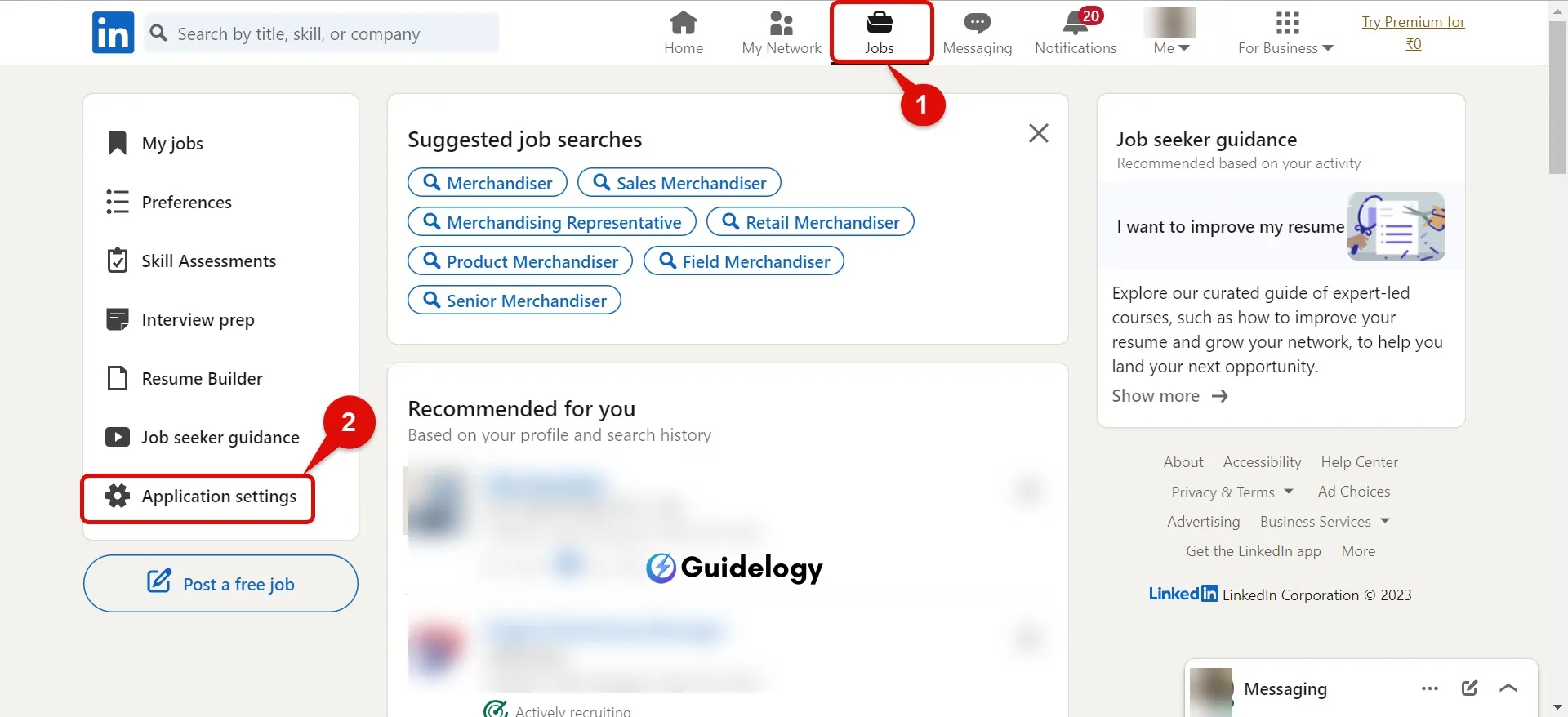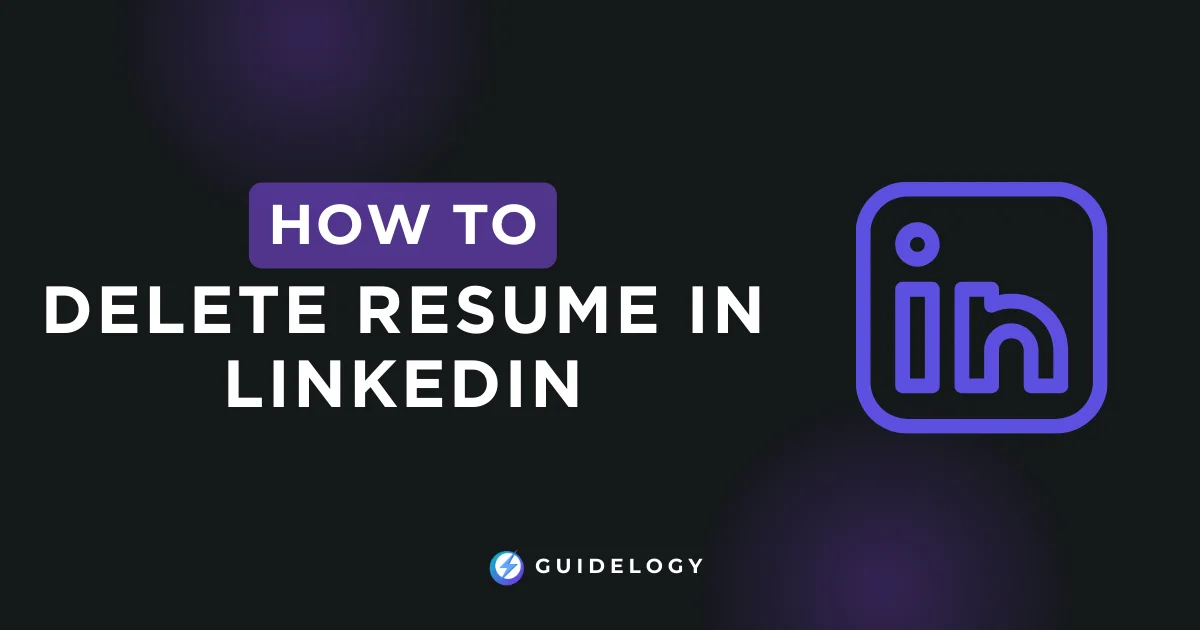Updating your LinkedIn profile but can't figure out how to remove your old resume? Don't worry, you're not alone. Many professionals face difficulties when it comes to managing their digital presence on this important networking platform.
I'm here to help! Let me guide you through the process of deleting your resume from LinkedIn step by step.
Why Delete Resume in LinkedIn?
Deleting your resume from LinkedIn may seem confusing at first. LinkedIn is a popular platform for networking and job hunting. However, there are several reasons why you might want to remove your resume from this social media powerhouse.
One important reason is privacy concerns. In today's digital age, many professionals have faced unwanted attention or privacy breaches due to personal information displayed on their resumes. By deleting your resume, you reduce the risk of your personal data falling into the wrong hands.
Another reason to remove your resume is when you need to update your information. Resumes provide a snapshot of your work history and skills at a specific point in time. As your career progresses, this document can quickly become outdated. It's essential to ensure that potential employers see your most current experience and achievements.
Targeted job searches can be more efficient without an attached resume. Some users prefer a more customized approach when applying for jobs. Instead of a generic resume visible to all, they choose to submit customized applications and cover letters for each position.
There are situations where starting fresh is necessary. For example, after a significant career change or rebranding, your old resume may no longer reflect your professional identity. Starting anew on LinkedIn without the history of your previous trajectory can help support a new narrative.
I once interviewed a marketing specialist who effectively managed her LinkedIn profile. She deleted her resume after shifting her focus from traditional marketing to digital strategy. This allowed her to adjust her LinkedIn presence to highlight her new skills and experiences, making it more relevant to the roles she was pursuing.
Lastly, the dynamics of networking on LinkedIn often favor a more interactive approach over a static resume. Engaging in posts, articles, and active participation in groups can paint a fuller picture of your capabilities and thought leadership. This way, you aren't solely relying on a document that may no longer represent your professional path.
Remember, LinkedIn itself serves as a living resume. Your profile acts as a dynamic CV showcasing your career milestones. Sometimes, less is more, and allowing your LinkedIn profile to tell your professional story might just give you the strategic advantage you need in a highly competitive job market.
How to Delete a Resume in LinkedIn
Step 1: Log in to Your LinkedIn Account
When you want to manage your professional documents on LinkedIn, you can begin by logging into your account. It's a simple process where you enter your username and password. Once you're logged in, you'll be taken directly to your LinkedIn homepage. This page is like a central hub for all your activities on the platform, including when you want to remove your resume.

Step 2: Open the “Jobs” Tab
Now, you should go to the “Jobs” section on LinkedIn. It's located at the top of the interface and is specifically designed for people who are looking for jobs or want to recruit. When you click on this tab, you will see a section that displays job opportunities that are recommended for you based on your profile, saved searches, and the applications you have previously submitted. Next, click on the “Application Settings” option.

When you go to the “Jobs” section on LinkedIn, you will find a tab called “Application Settings” This is where you can see all the jobs you have applied for using the platform. In this section, you can review and manage your applications. You will be able to see the job title, the date you applied, and a link to the job posting for each application. If you click on a specific application, you can view the resume you uploaded for that job.

It's important to remember that LinkedIn is a dynamic platform for building professional connections. Although you can remove your resume, the history of your applications will still be visible to the employers you applied to. It's crucial to keep your profile up-to-date as it reflects your current professional story, which is important for networking and job searching.
What Happens When You Delete a Resume?
When you remove a resume from LinkedIn, it's pretty straightforward. First, the resume file is deleted from the ‘Application Settings' section. This means that you can no longer access or download it from your LinkedIn account. However, it's important to understand that this action doesn't erase your job application history. Potential employers or recruiters who received your applications can still see that you applied, and they keep a copy of your resume.
LinkedIn doesn't notify these entities about the deletion either. Once you submit your resume, you have limited control over it. To fully retract it, you would need to contact the employer or recruiter directly, but this may not always lead to the desired outcome and is rarely practical.
Let's take an example to illustrate this. Imagine you applied for a position at XYZ Corp through LinkedIn and later decided to delete your resume. Even after deletion, XYZ Corp would still have the initial resume that you submitted during the application process. To address this situation, it's crucial to reach out with an updated resume if your circumstances change.
Another aspect to consider is the LinkedIn cache. Like most platforms, LinkedIn may temporarily hold onto data. So immediately after you delete your resume, it might still appear to be there due to caching. However, it usually disappears after a short period or when you refresh the page.
Finally, removing outdated or irrelevant resumes is part of good LinkedIn hygiene. It helps you stay organized and ready for current opportunities. Regularly updating your LinkedIn profile ensures that your professional representation accurately reflects your most recent experiences and skills.
- Delete resume file from ‘Application Settings'
- Application history remains with potential employers
- LinkedIn does not inform recipients of the deletion
- Employers retain the submitted copy of the resume
- Contact employers directly for retraction or updates
- Caching may temporarily display the deleted resume
- Regular profile updates present recent qualifications
Why You Might Want to Keep a Resume in LinkedIn
If you keep your resume on LinkedIn, it can be really helpful for you. It works like a digital resume and portfolio where you can show your work history, achievements, skills, and connections with professionals. It's a great way to showcase your expertise and make yourself stand out in the job market.
Instant Accessibility for Recruiters: Maintaining a resume on LinkedIn helps you make your professional story easily accessible to recruiters and potential employers. LinkedIn's search features make it simpler for hiring managers to find your profile and, consequently, your resume. They are on LinkedIn to discover candidates like you, so it is important to showcase your expertise and skills on the platform.
Opportunities Come Knocking: Even when you're not actively looking for a job, you can still come across opportunities unexpectedly. Your resume on LinkedIn serves as a tool for passive job searching, constantly working to attract hiring professionals. These professionals often search for candidates like you who may not be actively applying, but possess the right skills and experience. So, it's important to showcase your expertise on your LinkedIn profile to catch their attention.
Endorsements and Recommendations Enhance Credibility: LinkedIn's social features let your colleagues endorse your skills and write recommendations, which act as testimonials to your professional abilities. These endorsements are crucial in setting you apart from others in your field and adding a level of credibility that traditional resumes cannot match.
Let me give you an example that will help you understand why it's important to keep your LinkedIn profile updated.
In 2020, when remote work became more common due to the pandemic, many companies started using LinkedIn as a main tool for hiring. A study showed that 70% of recruiters relied on LinkedIn to find suitable candidates. This means that it's crucial for you to have an accessible and up-to-date resume on the platform.
| Year | Percentage of Recruiters Using LinkedIn |
|---|---|
| 2020 | 70% |
Maintaining a resume on LinkedIn also helps enhance your digital presence and personal brand. Having a complete profile, including your resume, allows you to present a polished and professional image to anyone who visits your profile.
Moreover, keeping your resume on LinkedIn provides valuable data insights. LinkedIn's analytics can show you who has viewed your profile and where these viewers come from. This gives you insights into how well your resume is performing in the job market and where your personal brand stands.
Additionally, having your resume on LinkedIn allows you to showcase your expertise to others. It gives you a platform to highlight your skills, experience, and achievements, making it easier for potential employers or connections to recognize your capabilities.
Overall, maintaining a resume on LinkedIn is a beneficial practice that can help you establish a strong online presence, gain valuable insights, and showcase your expertise to others.
Conclusion
Deleting your resume from LinkedIn is an easy process that can help you manage your professional presence. Remember, this won't delete your job application history, but it will make your resume inaccessible for viewing or downloading in the future. If you want a fresh start with potential employers, you should directly contact them.
While it's good to have a resume ready for opportunities, it's equally important to keep your LinkedIn profile updated with your current skills and experiences. This way, you increase your chances of being noticed by recruiters and strengthen your personal brand in the online job market.
